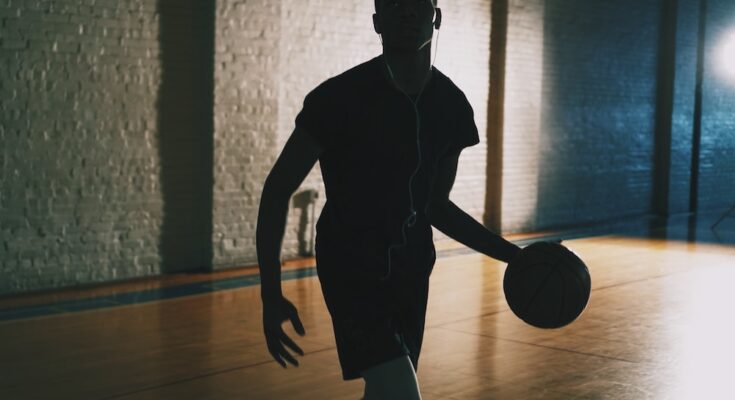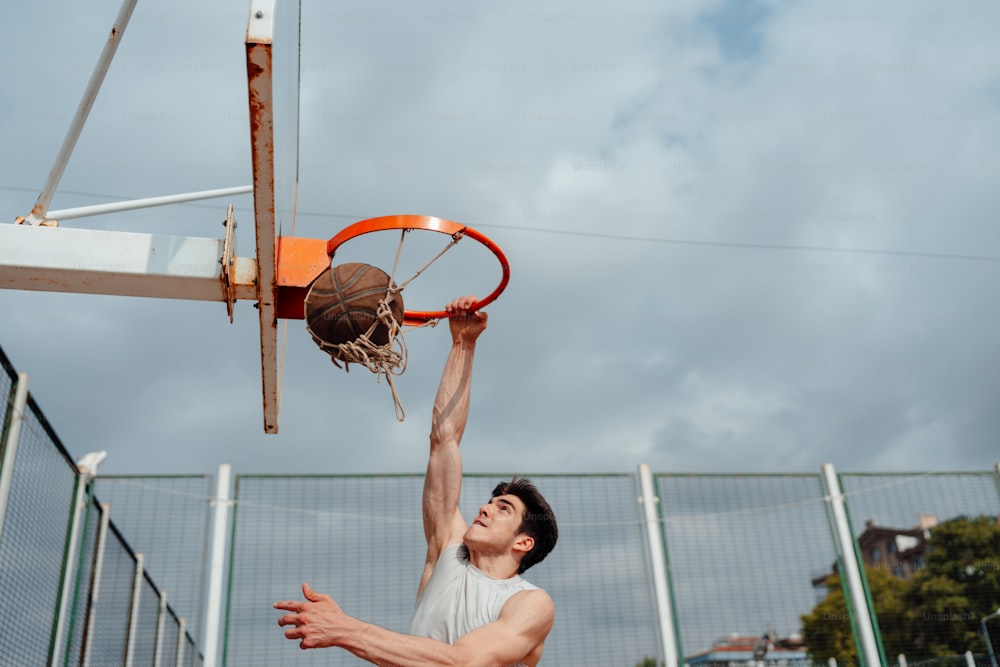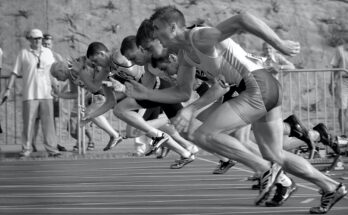Increase Your Vertical Leap in Basketball
Working to increase your vertical leap can help you advance in your sport if you’re an athlete. You can succeed in a variety of sports, such as basketball, gymnastics, and volleyball, by developing a powerful vertical leap.
Additionally, it will aid in enhancing your overall flexibility and athleticism. Exercises like calisthenics, plyometrics, and weight training can improve your vertical leap.
Polymetric exercises: increase vertical leap
Image via Unsplash.com
One of the best ways to increase your vertical leap is through plyometric activities. These exercises educate and develop your muscles by applying explosive energy. All of these workouts include jumping and depend on your own body weight to get benefits.
You should only perform plyometric exercises twice each week, with at least two days of recuperation in between.
Give yourself at least one day every week of uninterrupted rest.
Perform jump squats
Squat as low as you can with your feet hip-width apart. However, instead of carefully standing up again, jump out of the squatting position and attempt a 180-degree turn. Don’t attempt to land standing up; instead, stoop down after the jump. Repeat, hopping in different directions. For instance, start by making a right turn, then a left turn, and so on.
until it becomes effortless, perform 3 sets of 5, then increase to 3 sets of 8.
Bulgarian spilt squats: increase vertical leap
Image via Unsplash.com
Place your non-working leg up on a bench or chair seat while standing a few steps away from it, with the top of your foot flat on the seat. Push back up through the heel of your front foot that is on the ground after lowering your torso until your back knee is almost touching the floor. It’s one rep.
Do box jumps
Get a platform or box that can support your weight. Put the box in your front. Suddenly leap up onto the platform or box. Utilize as much electricity as you can. Reverse the motion and fall on your knees.
Start with 3 repetitions. Put more emphasis on quality than quantity.
Jump rope: increase vertical leap
Image via Unsplash.com
Jumping rope helps you develop your jumping skills by strengthening the muscles required to perform a vertical leap. Jump where there will be enough space above your head for the rope, such as on a firm surface like a hardwood floor. Every day for ten minutes, jump. If you are unable to complete it all at once, you can divide it into two-to-three-minute jumping parts, with rest breaks and/or other exercises in between.
Don’t “skip” rope, which involves jumping with one foot in place to simulate running. Instead, make an effort to keep your ankles firmly together as you simultaneously jump with both feet.
Calisthenics increase flexibility
Basic bodyweight movements that aid in muscular development are part of calisthenics. You can perform calisthenics anyplace to increase your strength and agility because you don’t need any special equipment. Perform leg-focused calisthenics to increase your vertical leap.
Push-ups, jumping jacks, sit-ups, and other exercises are some examples of calisthenics.
Calf raises: increase vertical leap
Image via Unsplash.com
Legs together when you stand. Before lowering yourself, raise yourself up onto your toes. Moving slowly can force your muscles to work harder.
Stand on a curb or step’s edge for greater results.
Start with 20 reps and increasing the number as the exercise becomes easier.
Deep squats
Keep your heels level to the ground and space your feet out to hip width. Simply bending your knees will allow you to lower yourself as much as you can while maintaining an upright posture and a straight neck. Regain your initial position by lifting.
When you squat deeply, your thighs should touch your knee.
A good squat should feel like it works your entire lower body while also stretching the muscles in your core that surround your back and abdomen.
First, perform three sets of 10 squats.
Squat while maintaining your balance by standing on your toes. Your ankles will become stronger as a result.
Standing on one leg: increase vertical leap
Standing on each leg alternately will strengthen your ankles. When you land your jumps, this might help you avoid suffering an ankle injury. Focus on a point directly in front of you as you stand up straight. As soon as your leg begins to feel fatigued, lift one foot off the ground and maintain this posture. Repeat this procedure by shifting your weight to the opposite leg.
Trap bar deadlifts
Image via Unsplash.com
Because they contain an open center that enables the user to enter, trap bars differ from normal barbells. You will be positioned inside the barbell’s center. Grab the barbell, stoop, and stand up. As you ascend, lift the trap bar while maintaining the barbell close to your body. Arms should remain at sides. Hold the weight for a short while before lowering it.
The heaviest weights you can lift for a deadlift should be used.
Keep your arms extended down and the bar near to your torso. Avoid tying your elbows.
Single arm dumbbell snatches: increase vertical leap
Dumbbell should be placed on the ground in front of you. Grab the dumbbell with one hand as you squat down. Lifting the dumbbell as you stand up. Dumbbell held above your head. Hold for a moment, then drop the weight to its initial position.
Perform three 8-rep sets.
Start light and concentrate on your speed.
Weighted squats
Your feet should be hip-width apart. Raise a barbell or two dumbbells to shoulder height and place them there. As much as you can, incline yourself downward while keeping the weights in place. Get back to your feet and stand up.
Three sets of eight.
Start with 5-lb (2.25 kg) weights when using dumbbells, then move up to 7- (3 kg) to 8-lb (3.5 kilograms) weights.
Start with the bar alone if you’re using a barbell.
Practice jumping: increase vertical leap
Image via Unsplash.com
Try a couple vertical leaps every few days to gauge your improvement. Though repeating them repeatedly will result in slower growth than undertaking specific exercises to prepare your body for athletic performance, don’t make vertical leaps your major method of training.










